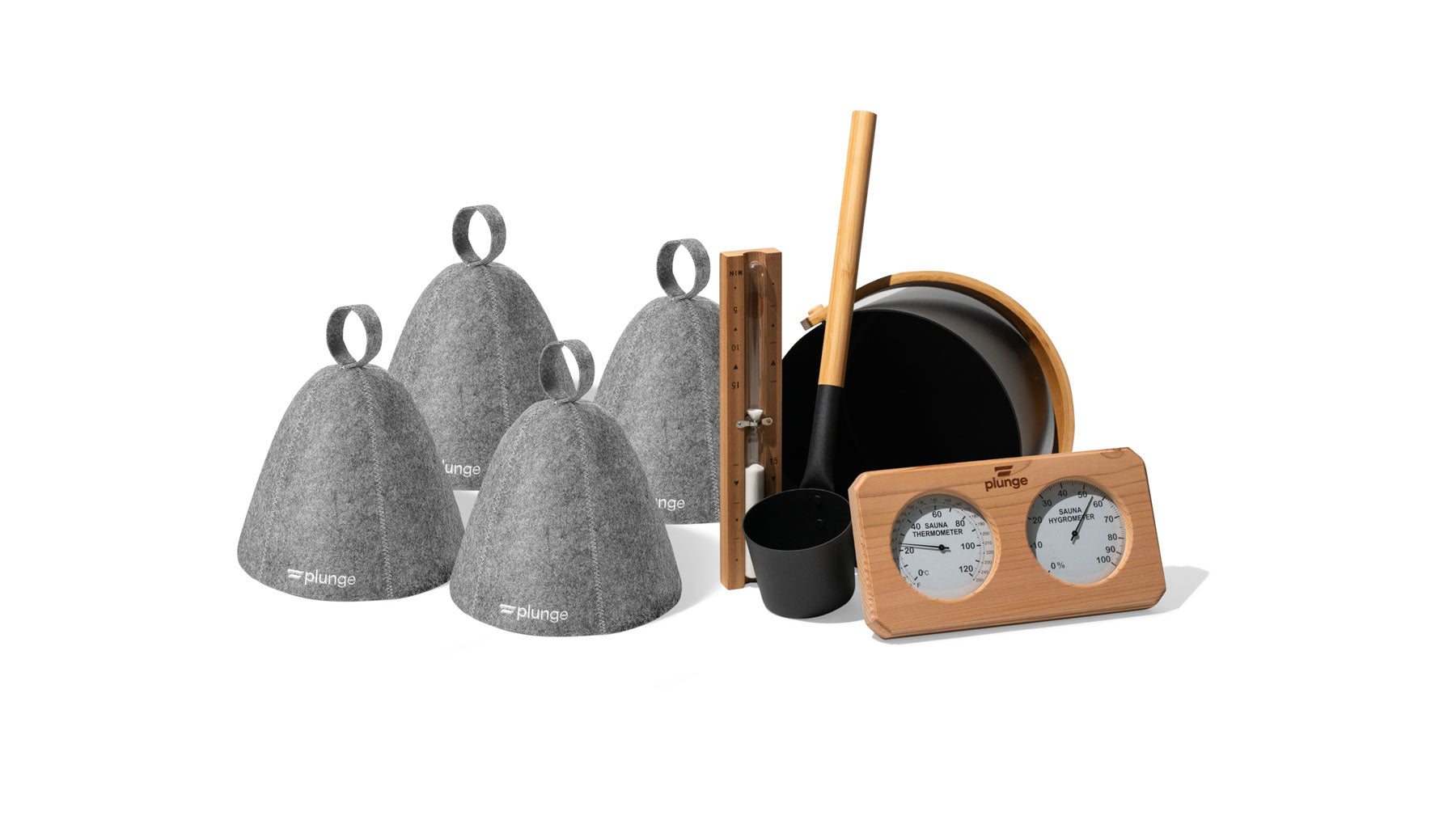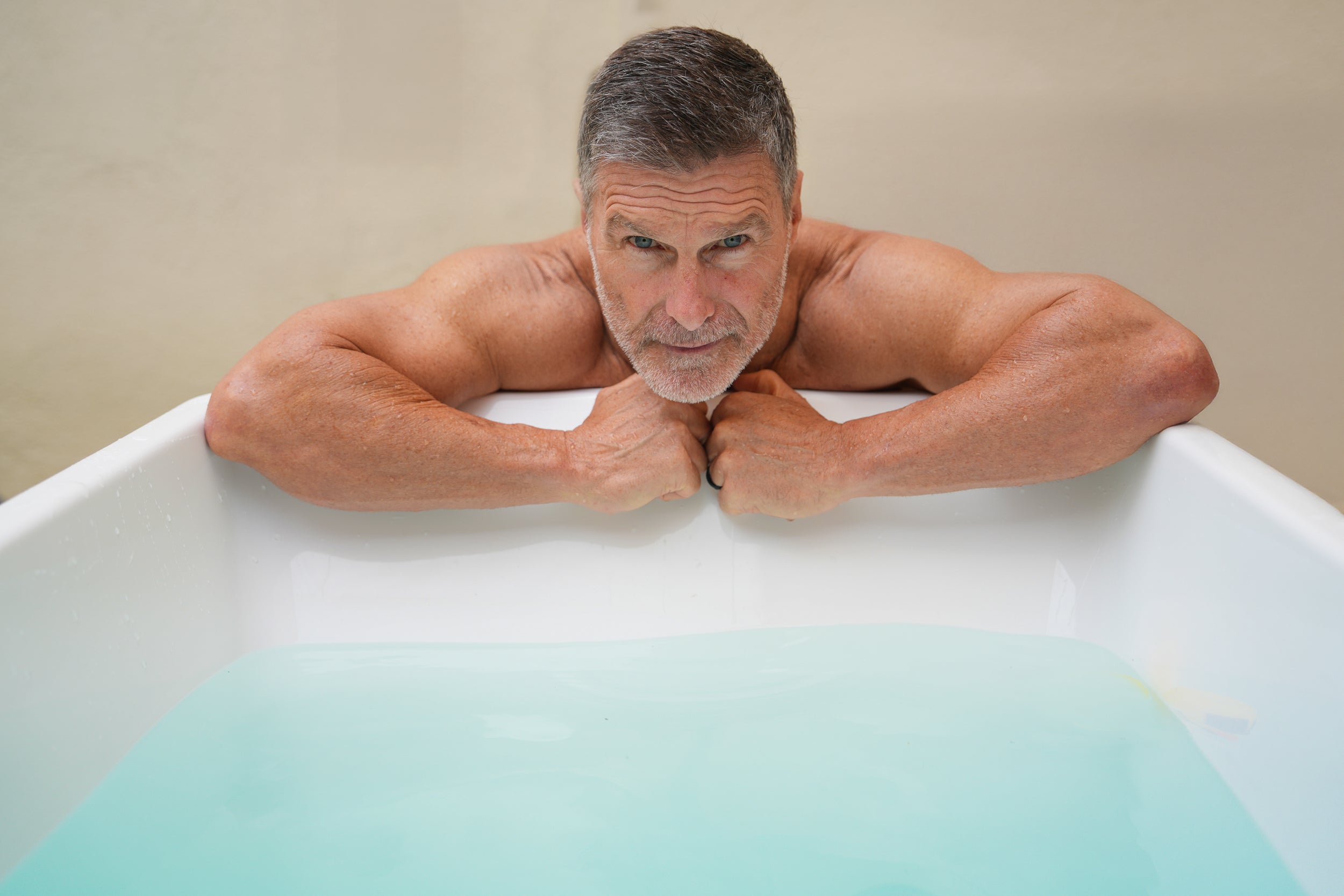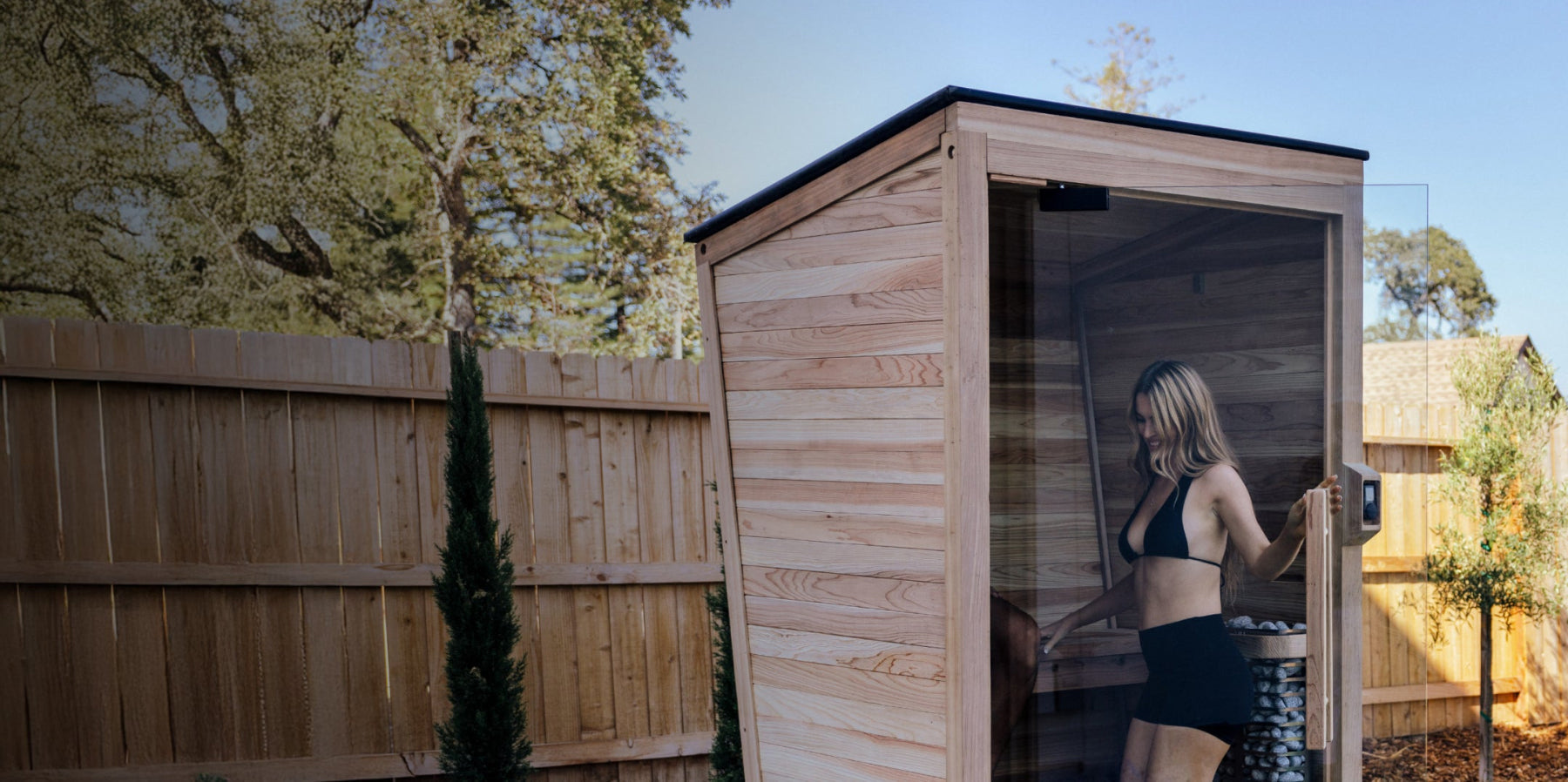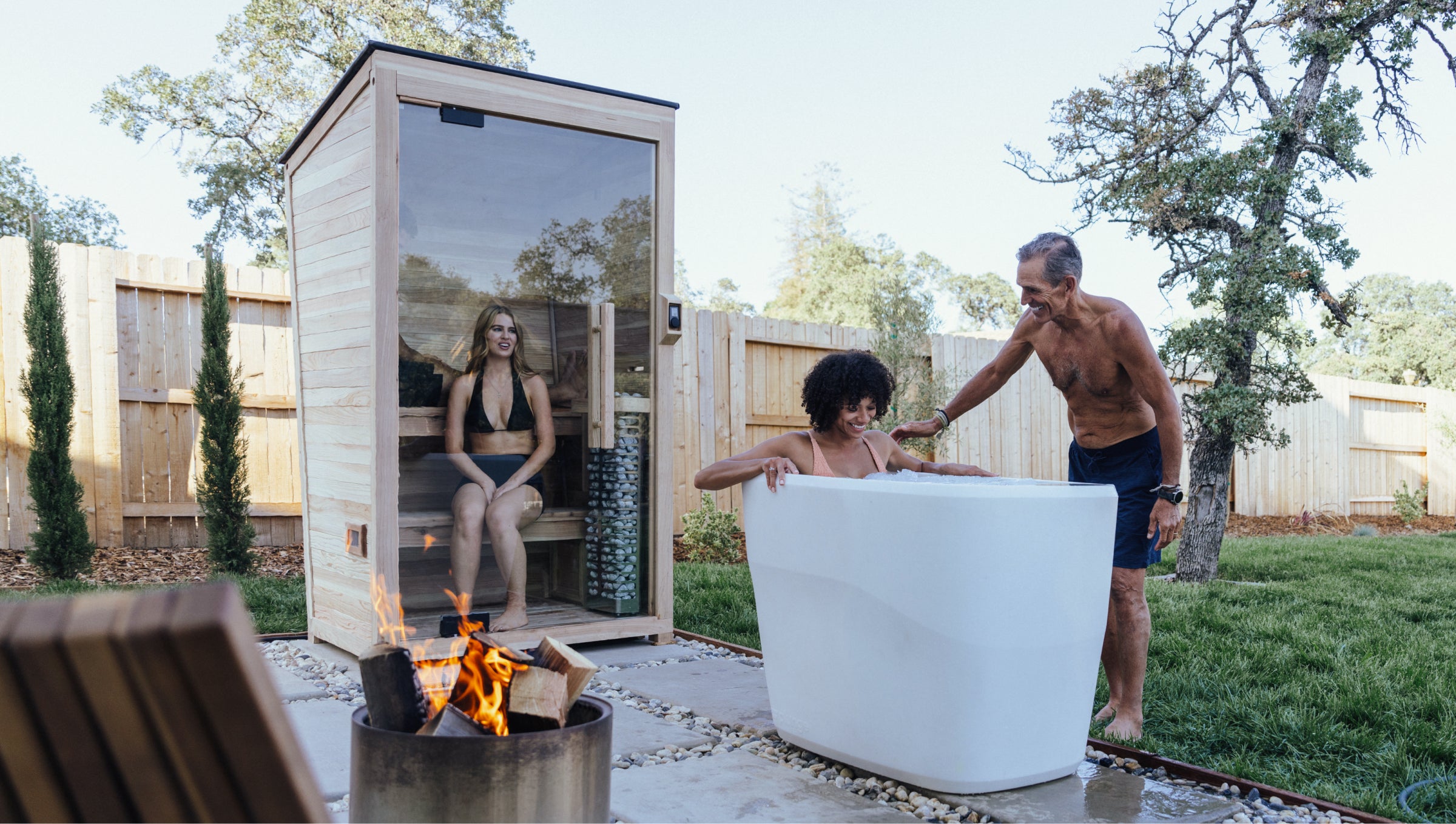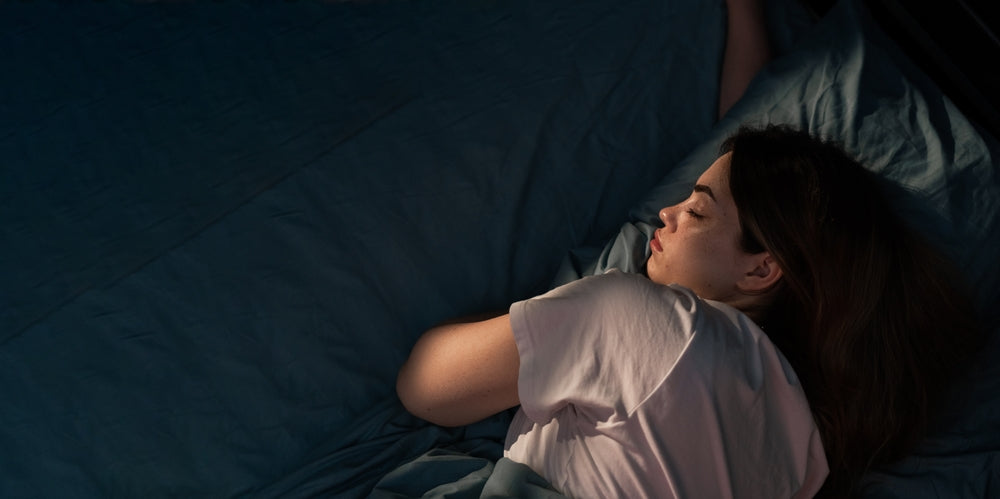
Guide to Sleep Stages & Getting a Better Night’s Sleep
In today’s fast-paced world, quality sleep can be difficult to come by — millions across the US alone struggle with sleep issues that hinder their daily lives. But understanding the intricacies of sleep can be the key to unlocking better rest. Keep reading to learn about the sleep cycle, its stages, and natural strategies for waking up rejuvenated and ready to face the day.
Table of Contents:
- What is the Sleep Cycle?
- 4 Stages of Sleep
- Natural Sleep Aids & Practices
- Reset Your Circadian Rhythm With Cold
What is the Sleep Cycle?
The sleep cycle is a delicate balance of brain and body activity that occurs in several stages throughout the night. Its cadence is governed by an intrinsic biological clock (the circadian rhythm), which regulates our wake-sleep patterns in response to cues like food, light levels, and temperature. Each phase plays a different and unique role, from physical restoration to memory consolidation.
What Affects the Sleep Cycle?
Various factors can impact your sleep cycle, including things like age, lifestyle, and environmental conditions. For example, high stress can lead to lower-quality sleep, while a diet rich in tryptophan can improve it. Other factors include:
- Light Exposure: Blue light, especially from screens, suppresses melatonin production (the sleep hormone), so exposure before bed can disrupt the sleep cycle.
- Caffeine and Alcohol: While both may induce short-term drowsiness, they disrupt sleep architecture later in the night.
- Temperature: A cool and dark environment facilitates effective sleep, while a warm room can be uncomfortable and disrupt it.
- Stress and Anxiety: These can trigger fight-or-flight responses, making it difficult to calm your body so it can fall asleep and stay asleep.
How Many Stages of Sleep Are There?
Sleep is divided into four primary stages (which we’ll explore in more detail below). Each has distinct brain wave patterns, characteristics, and functions essential for your overall health. This cycle typically repeats every 90 minutes or so throughout the night.
Types of Sleep Disorders
Sleep disorders like insomnia, sleep apnea, and restless leg syndrome can disrupt the sleep cycle, leading to poor sleep quality and compromised health.
- Insomnia: Difficulty falling or staying asleep.
- Sleep Apnea: Pauses in breathing during sleep.
- Restless Legs Syndrome: Uncontrollable urge to frequently move your legs at night.
4 Stages of Sleep
As mentioned earlier, there are four primary stages of the sleep cycle — three are non-rapid eye movement (NREM) phases, and the last is REM sleep (which many of us have probably heard of).
Stage 1 Sleep (N1)
The first stage, or N1, is the lightest sleep stage and is the transition between wakefulness and sleep. It typically only lasts around five minutes and is characterized by slow eye movements and muscle relaxation. Because it's easy to wake someone during this stage, progressing to N2 quickly is important for achieving deeper, more restorative sleep.
Stage 2 Sleep (N2, Core Sleep)
Stage 2 (N2) is the first stage of true sleep and is the longest phase, accounting for about half of our time asleep. Brain waves become even slower, your body temperature falls, and brief bursts of activity (sleep spindles) occur. K-complexes (another type of brainwave) also appear, which are thought to help memory consolidation. It's considered a light sleep stage but is very important for the body to begin its recovery process.
Stage 3 Sleep (N3)
N3 is called deep sleep or slow-wave sleep and is critical for physical restoration, immune function, and more. Delta waves (the slowest brainwaves) begin as we enter N3, and our body relaxes even more. Deep sleep is when the pituitary gland releases growth hormone, supporting muscle development and repair in children and young adults. This stage is crucial for feeling refreshed and energized when you get up, which is also why it’s the most challenging stage to wake someone up from.
Stage 4 Sleep (REM)
Stage 4, or Rapid Eye Movement sleep, is where most dreaming occurs, aiding cognitive functions like learning, memory, and emotional processing. REM is (as the name suggests) characterized by our eyes quickly darting behind our eyelids, and brain activity actually resembles wakefulness. However, the body undergoes temporary paralysis to prevent acting out dreams so this activity is limited to our brains.
What Stage of Sleep Do You Dream?
Dreaming predominantly occurs during REM sleep, the fourth stage of the sleep cycle. The heightened brain activity and eye movements provide the perfect environment for vivid images and imagination. However, some dream fragments can happen during other sleep stages.
What is the Deepest Stage of Sleep?
The deepest stage of sleep is N3, which is why it’s often called “deep sleep.” It’s vital for physical health, allowing our body to repair tissues, build bone and muscle, and strengthen the immune system.
Natural Sleep Aids & Practices to Get a Better Night’s Rest
Achieving better rest often requires incorporating various natural sleep aids and practices into your routine. Let’s explore some of the most popular methods:
- Create a Consistent Sleep Schedule
- Relax Before Bed
- Try a Sauna to Wind Down
- Manage Stress & Anxiety
- Avoid Irregular or Long Naps
- Keep Cool & Dark
- Cold Plunge to Start Your Day
- Stay Active
- Take Natural Herbs & Minerals
Create a Consistent Sleep Schedule
One of the most important things you can do is establish a regular sleep-wake cycle by going to bed and waking up at the same time. Doing this every day (even on weekends) helps regulate your body’s internal clock and can condition your body to naturally fall asleep and wake up at specific times without the need for alarms. Try to aim for 7-9 hours of sleep each night for ideal rest and recovery.
Relax Before Bed
Try calming activities before bed like reading or taking a warm bath, as this preps your body for sleep. You should also minimize your exposure to screens (so no doom scrolling through TikTok) because the blue light emitted can disrupt melatonin production — and therefore disrupts your brain’s relaxation. Try progressive muscle relaxation, warm baths, meditation, or listening to soothing music to enhance your wind-down routine.
Try a Sauna to Wind Down
Another way to relax before bed is a sauna session — similar to warm baths, it relaxes your muscles and increases your body temperature. Studies show that pre-sleep sauna use can improve sleep quality and promote relaxation. The gradual cooldown in body temperature post-sauna mimics the natural circadian rhythm, making it easier to fall asleep. Even better, the relaxation of sauna use has a wide variety of other benefits as well, such as stress reduction, detoxification, and pain relief.
Manage Stress & Anxiety
A major factor that can prevent you from falling asleep (or result in low-quality sleep) is stress. By practicing mindfulness, meditation, or yoga, you can manage this and lower cortisol levels — making it easier to relax and fall asleep. Another way to accomplish this is by journaling before bed, clearing your mind of anxious thoughts.
Avoid Irregular or Long Naps
While it may be difficult to stay awake during those afternoon lulls, napping can throw off your circadian rhythm and make it more difficult to get restorative sleep at night. If you feel excessively tired during the day, it might be a sign of poor nighttime sleep that should be addressed. Short naps can be refreshing, but irregular or long naps might be hurting your sleep quality — so limit any naps to 20-30 minutes and avoid napping after 3pm.
Keep Cool & Dark
Creating a sleep-friendly environment by keeping your bedroom cool, dark, and quiet can significantly improve sleep quality. You might consider blackout curtains to block light and a white noise machine to drown out disruptive sounds. A cool room (around 65°F or 18°C) is shown to be an ideal temperature for most people. This goes back to our ancestors and internal biological clocks, when sleeping in a dark cave or shelter as the ambient temperature dropped signaled the body that the day was over.
Cold Plunge to Start Your Day
Speaking of cool temperatures, cold plunging could indirectly improve your sleep quality — along with its host of other health benefits. The cold exposure of a morning plunge triggers a physiological response that helps reset the start of your circadian rhythm, making it easier for your body to know when to wind down at the end of the day. The sudden temperature change can boost alertness and energy, helping you stay active during the day and fall asleep more easily at night.
Stay Active
Regular physical activity has also been shown to improve sleep quality and duration by tiring your body out and reducing stress levels to promote deeper sleep stages. It‘s recommended to get at least 30 minutes of moderate exercise most days of the week, but try to finish any workouts at least a few hours before bedtime to avoid any stimulating effects from adrenaline.
Take Natural Herbs & Minerals
Certain herbs and minerals, like valerian root, magnesium, chamomile tea, kava, and lavender, can aid in relaxation and improve sleep quality. Valerian root and chamomile have mild sedative effects, while magnesium helps regulate melatonin production (and magnesium deficiency has been linked to insomnia). Kava and lavender are a little more indirect but can help reduce anxiety, further enhancing sleep.
Reset Your Circadian Rhythm With Cold
If you’ve tried consistent sleep schedules, supplements, and exercise but haven’t seen the results you’ve wanted, it might be worth considering the benefits of cold plunging. Improved sleep is only one of the ways it can help you feel better — both mentally and physically. You can also combine it with sauna sessions to feel the power of contrast therapy!
Not sure where to start? We have an easy quiz to find the right product for your budget, goals, and lifestyle and our products also have affordable financing options. Thousands of people have jumped into cold plunging and been blown away by how they feel, so don’t miss out!
Medical Disclaimer: The information contained in this post is for informational and educational purposes only. It is not intended to provide medical advice or to take the place of such advice or treatment from a personal physician. All readers/viewers of this content are advised to consult their doctors or qualified health professionals regarding specific health questions or before embarking on any new health or wellness routine, including saunas and cold plunging. Neither the author(s) nor the publisher of this content take responsibility for possible health consequences of any person or persons reading or following the information in this educational content. All viewers of this content, especially those taking prescription or over-the-counter medications, should consult their physicians before beginning any cold plunging routine or other health or wellness program.
References
Patel AK, Reddy V, Shumway KR, et al. Physiology, Sleep Stages. [Updated 2024 Jan 26]. In: StatPearls [Internet]. Treasure Island (FL): StatPearls Publishing; 2024 Jan-. Available from: https://www.ncbi.nlm.nih.gov/books/NBK526132/
Fan Y, Wang Y, Gu P, Han J, Tian Y. How Temperature Influences Sleep. International Journal of Molecular Sciences. 2022; 23(20):12191. https://doi.org/10.3390/ijms232012191
Marissa A Evans, Daniel J Buysse, Anna L Marsland, Aidan G C Wright, Jill Foust, Lucas W Carroll, Naina Kohli, Rishabh Mehra, Adam Jasper, Swathi Srinivasan, Martica H Hall, Meta-analysis of age and actigraphy-assessed sleep characteristics across the lifespan, Sleep, Volume 44, Issue 9, September 2021, zsab088, https://doi.org/10.1093/sleep/zsab088
Sutanto, C. N., Loh, W. W., & Kim, J. E. (2022). The impact of tryptophan supplementation on sleep quality: a systematic review, meta-analysis, and meta-regression. Nutrition reviews, 80(2), 306–316. https://doi.org/10.1093/nutrit/nuab027
Silvani, M. I., Werder, R., & Perret, C. (2022). The influence of blue light on sleep, performance and wellbeing in young adults: A systematic review. Frontiers in physiology, 13, 943108. https://doi.org/10.3389/fphys.2022.943108
Song, F., & Walker, M. P. (2023). Sleep, alcohol, and caffeine in financial traders. PloS one, 18(11), e0291675. https://doi.org/10.1371/journal.pone.0291675
Okamoto-Mizuno, K., & Mizuno, K. (2012). Effects of thermal environment on sleep and circadian rhythm. Journal of physiological anthropology, 31(1), 14. https://doi.org/10.1186/1880-6805-31-14
Kalmbach, D. A., Anderson, J. R., & Drake, C. L. (2018). The impact of stress on sleep: Pathogenic sleep reactivity as a vulnerability to insomnia and circadian disorders. Journal of sleep research, 27(6), e12710. https://doi.org/10.1111/jsr.12710
Staner L. (2003). Sleep and anxiety disorders. Dialogues in clinical neuroscience, 5(3), 249–258. https://doi.org/10.31887/DCNS.2003.5.3/lstaner
Shrivastava, D., Jung, S., Saadat, M., Sirohi, R., & Crewson, K. (2014). How to interpret the results of a sleep study. Journal of community hospital internal medicine perspectives, 4(5), 24983. https://doi.org/10.3402/jchimp.v4.24983
Doherty, R., Madigan, S. M., Nevill, A., Warrington, G., & Ellis, J. G. (2021). The Sleep and Recovery Practices of Athletes. Nutrients, 13(4), 1330. https://doi.org/10.3390/nu13041330
Zaffanello, M., Pietrobelli, A., Cavarzere, P., Guzzo, A., & Antoniazzi, F. (2024). Complex relationship between growth hormone and sleep in children: insights, discrepancies, and implications. Frontiers in endocrinology, 14, 1332114. https://doi.org/10.3389/fendo.2023.1332114
Purves D, Augustine GJ, Fitzpatrick D, et al., editors. Neuroscience. 2nd edition. Sunderland (MA): Sinauer Associates; 2001. Stages of Sleep. Available from: https://www.ncbi.nlm.nih.gov/books/NBK10996/
Takahashi, M. Prioritizing sleep for healthy work schedules. J Physiol Anthropol 31, 6 (2012). https://doi.org/10.1186/1880-6805-31-6
Alnawwar, M. A., Alraddadi, M. I., Algethmi, R. A., Salem, G. A., Salem, M. A., & Alharbi, A. A. (2023). The Effect of Physical Activity on Sleep Quality and Sleep Disorder: A Systematic Review. Cureus, 15(8), e43595. https://doi.org/10.7759/cureus.43595
Xie, Y., Liu, S., Chen, X. J., Yu, H. H., Yang, Y., & Wang, W. (2021). Effects of Exercise on Sleep Quality and Insomnia in Adults: A Systematic Review and Meta-Analysis of Randomized Controlled Trials. Frontiers in psychiatry, 12, 664499. https://doi.org/10.3389/fpsyt.2021.664499
Srivastava, J. K., Shankar, E., & Gupta, S. (2010). Chamomile: A herbal medicine of the past with bright future. Molecular medicine reports, 3(6), 895–901. https://doi.org/10.3892/mmr.2010.377
Bent, S., Padula, A., Moore, D., Patterson, M., & Mehling, W. (2006). Valerian for sleep: a systematic review and meta-analysis. The American journal of medicine, 119(12), 1005–1012. https://doi.org/10.1016/j.amjmed.2006.02.026






